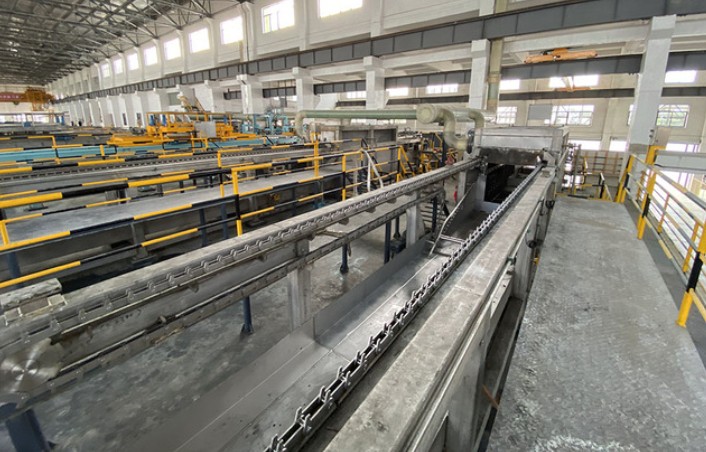NEWS&EVENTS
Home > News&Events > Company news > Why is anode plates for antimony electrolytic refining specially prepared for casting?
In antimony electrolytic refining, the special casting preparation of the anode plate is a key step to ensure the efficient and stable electrolysis process. The anode plate cast from crude antimony needs to meet a number of special requirements for the following reasons:

The board surface is flat and the thickness is uniform
Uniform current density distribution: A flat anode plate with uniform thickness facilitates uniform current density distribution during the electrolysis process. Current density is a key factor influencing electrolysis efficiency. Uniform current density ensures that all parts of the anode plate dissolve at a similar rate, avoiding electrolysis anomalies caused by excessive or insufficient local current density.
Preventing local overheating and passivation: If the anode plate has uneven thickness or uneven surfaces, the current density may be excessively high in certain areas during electrolysis, leading to elevated temperatures and even passivation. Passivation can hinder the normal dissolution of the anode plate and affect electrolysis efficiency.
No burrs
Preventing Short Circuits and Leakage: Burrs are extra metal protrusions on the edges or surfaces of anode plates. They can come into contact with other electrodes or electrolytic cell components, causing short circuits or leakage. This not only reduces electrolysis efficiency but can also lead to safety hazards.
Reducing Cathode Long Particles: Burrs can also cause cathode long particles, which is uneven metal deposition on the cathode surface, affecting the quality of cathode antimony.
Surface cleaning and milling
Ensure electrolyte purity: Impurities or oxides on the anode plate surface may contaminate the electrolyte, affecting the stability of the electrolysis process and the purity of the cathode antimony.
Improve electrolysis efficiency: Milling removes the oxide layer and impurities on the anode plate surface, ensuring uniform and stable dissolution during the electrolysis process, thereby improving electrolysis efficiency.